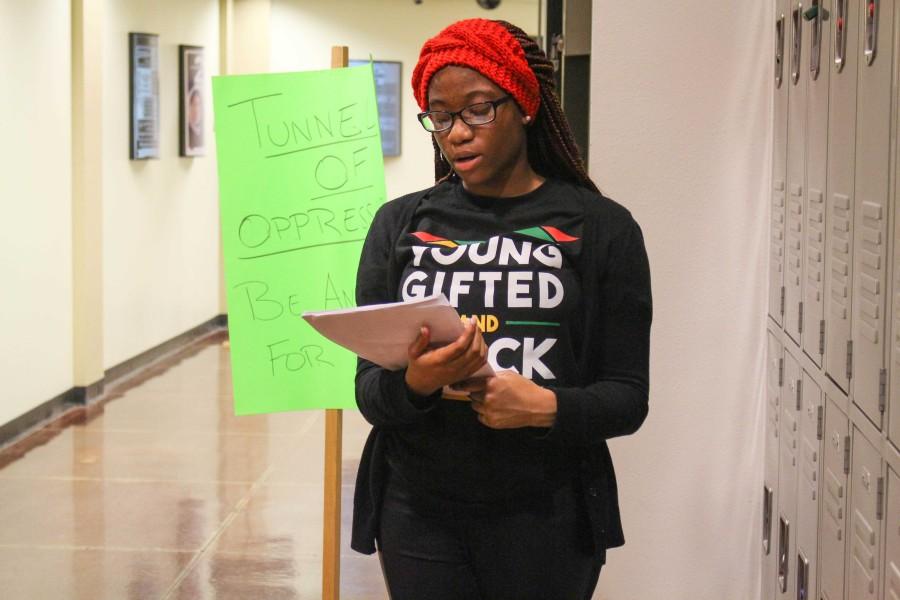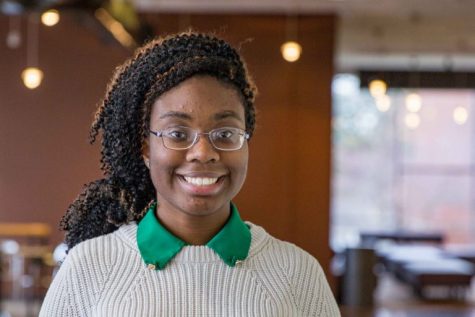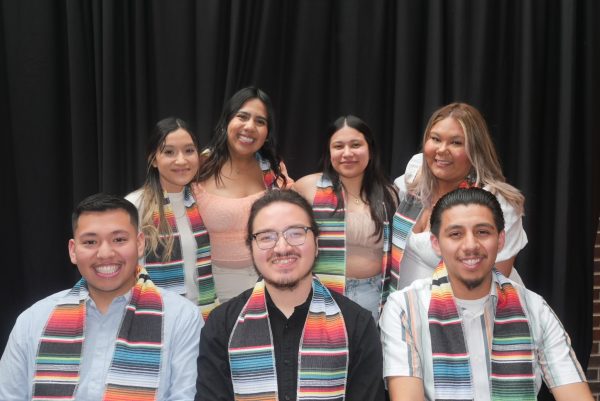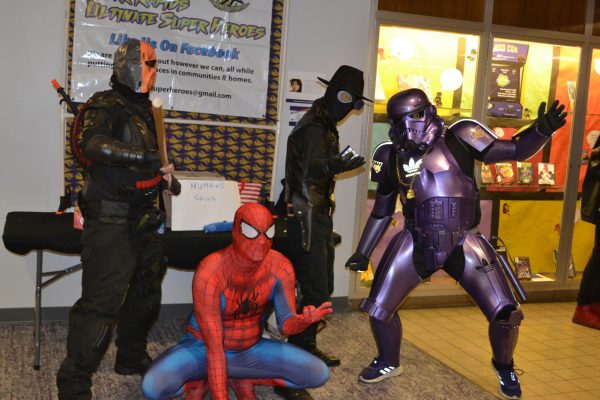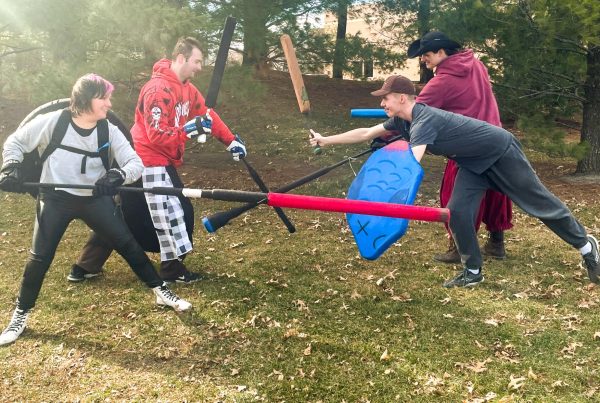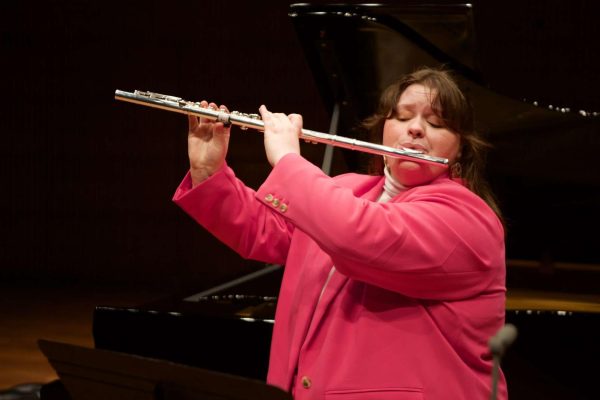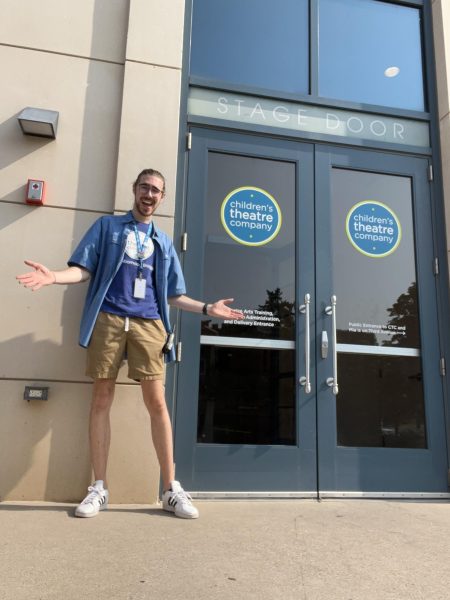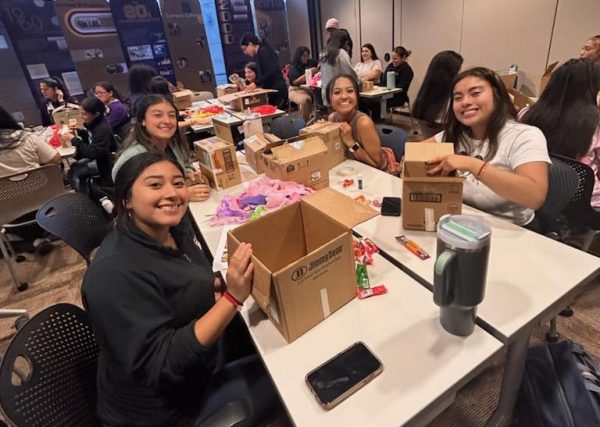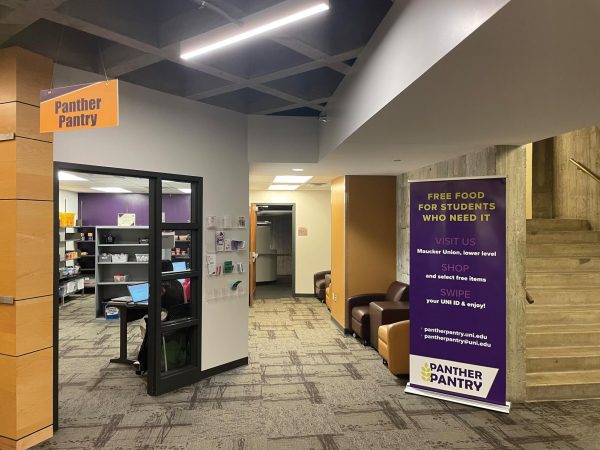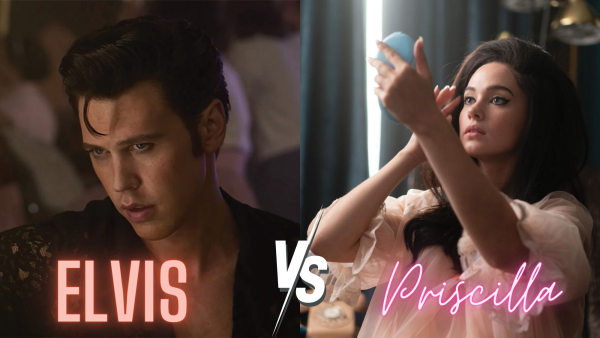Students take a trip through the Tunnel of Oppression
Feb 22, 2016
“Come see how it feels to be me. Step out of your comfort zone and into the Tunnel of Oppression,” said Precious Kennon, freshman psychology major. Kennon was one of the many Black Student Union (BSU) volunteers who helped put together the Tunnel of Oppression event on Wednesday, Feb. 17.
There were four stops in the Tunnel of Oppression touching base on: Black Media/Racial Profiling/Police Brutality, Black Hair, Slave Room and Flip the Script. The last stop was the Debrief Room was a counseling session done at the end of the Tunnel.
The Tunnel began with a look at how people of color are portrayed in media. There were a variety of signs and posters from recent pop culture events, ads and music videos that featured people of color in an unfavorable light.
On the floor was a mock police chalk outline of a young, unarmed black male who had been shot. One of the posters featured the controversy of Marc Anthony, an American-born Hispanic, who sang the national anthem at a baseball game, and was met with online comments such as, “Go back to Mexico.”
The next stop was the Black Hair room, which discussed the importance of hair in the African American culture. Students were shown Amandla Stenberg’s “Don’t Cash Crop on My Cornrows” video, as well as a “Black women share their hair stories, featuring Amandla Stenberg,” who notably portrays Rue in “The Hunger Games.”
After viewing the videos and passing around all the hair products, students were given the opportunity to ask questions about “weaves,” “braids” and other black hair styles.
Kiawayna Simms and Felicia Shumpert, the room facilitators, answered questions and said African Americans being asked, “Can I touch your hair?” gets old after the 10th time that day.
The Slave Room was the third stop of the Tunnel. This interactive walkthrough was designed to give students information about all the shapes and forms racism takes in America today, as well as give them a personal experience of what it is like.
“It was kind of dark,” said Aaron Pope, junior family services major about the Slave Room. Pope was a volunteer slave in the scenario along, with two other students. “But if you could’ve seen my eyes, they were just, like, huge, and I was just freaking out, like they did what? And this is what would happen to me.”
The “slaves” were told to stand on top of chairs and stools and wait. The moment the “Slaver,” Darvel Givens, came back in with the student customers, who were given fake money, he started cracking the whip to make a sale.
“We don’t have any buyers,” said Givens in character. “Well, I can’t take any of these dirty a– animals with me if you don’t buy ‘em I’ll just kill ‘em on the side of the f—–n’ road!”
The other students in the room later referred to their horrified silence when asked to purchase their fellow classmates as slaves.
Some students expressed that this room had the most impact on them.
“I was frozen, it was just such a shock,” said Pope. “Like I had no clue of the seriousness.”
Students were then brought into “history class” as a part of the Flip the Script room. This classroom contained a majority of black students, with Kristen Witte, freshman biology major, sitting alone in the very middle of the class.
Hansen Breitling, senior philosophy major, played the teacher who first discussed slavery and then asked Witte if her family owned slaves. Witte responded by saying she did not know, while the rest of the class mockingly asked her why she didn’t know her own roots. The class continued to put pressure on Witte to explain her white history and heritage, of which she had no knowledge.
“We wanted to give students and faculty a sense of how we felt in the classroom,” said Yakira Sanders, freshman social work major. “[We wanted to shed light on] how we get asked questions and people are staring at us, waiting for an answer.”
Witte said she volunteered for the role reversal to help out her friend.
“They told me what was going to happen,” Witte said. She said she was glad to help contribute to the learning experience for others.
After all the rooms, students gathered to debrief and discuss the feelings they had about the experience. Many said their understanding of racial issues was broadened.
“The whole thing was really eye-opening, and I really enjoyed a new learning experience,” Pope said. “I’ve been through things, but I’ve been through nothing compared to what I’ve learned today.”


